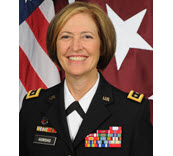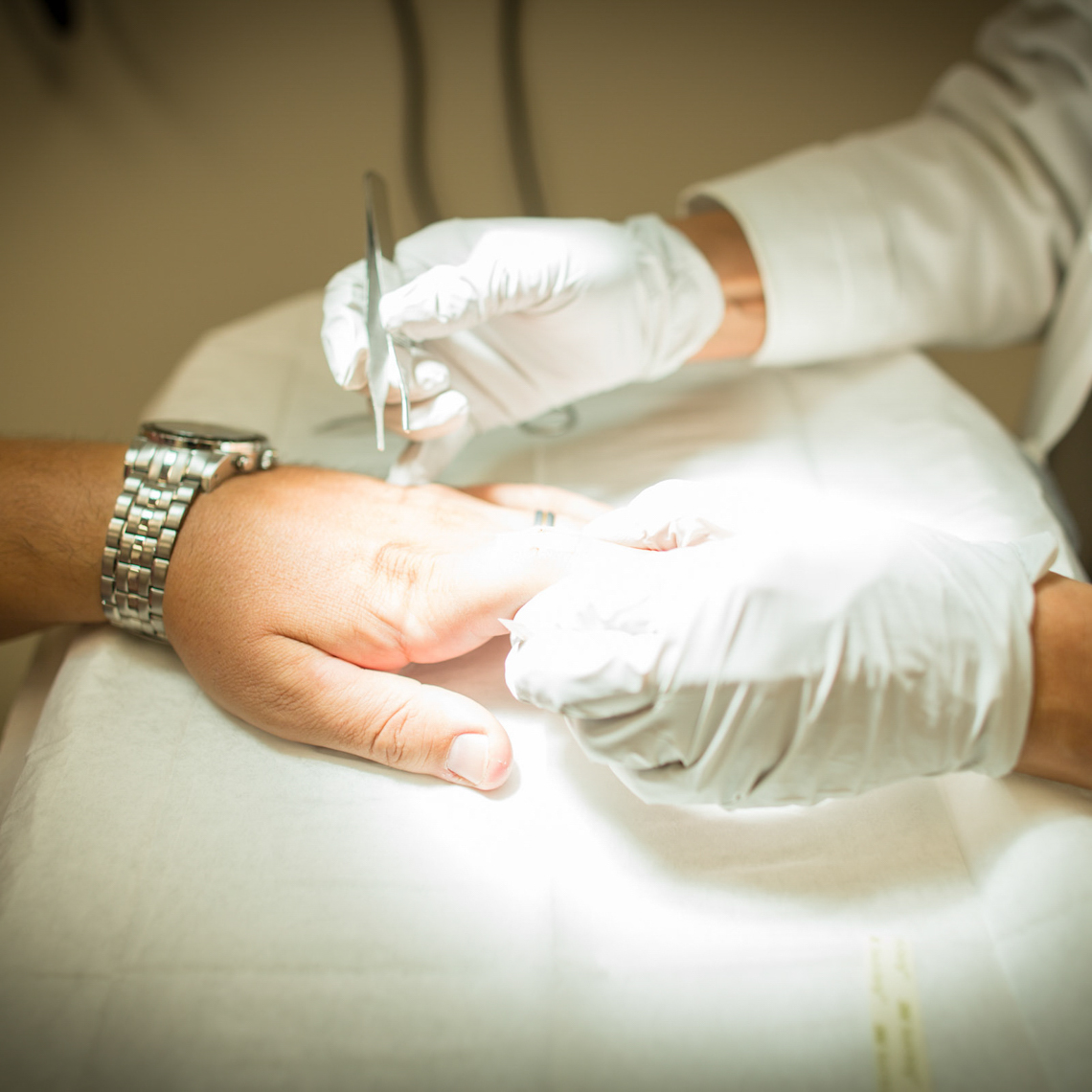Article
TEDMED Speakers: How Ignoring Medical Errors is Costing Lives
“The problem is not the errors. The problem is we ignore the errors.”

Patricia Horoho, RN
US Army Surgeon General
When we expect imperfection, we can proactively discuss it and study it to better analyze errors and near misses in hopes of minimizing preventable medical harm. That was the message from several prominent speakers at TEDMED 2014, which CRICO had the privilege to stream live to our staff and member organizations. Their talks aligned with CRICO’s philosophy to focus on reaching a more open environment for disclosing medical error with the belief that we create a safer environment in our hospitals if we look at the complete picture.
For over 30 years, CRICO has analyzed malpractice cases to identify areas of high risk. This trove of data, more than 300,000 claims, shines a light on where hospitals and clinicians should focus their efforts to reduce medical error. But this data does not include near misses unless a claim was filed. Given the lessons learned from our claims database, we know that many more lessons can be learned from near misses that are today, too often never reported. The following summary of three of this year’s TEDMED talks clearly illustrates the need to be more open in our communication around medical error.

Elizabeth Nabel, MD; Danielle Ofri, MD; Patricia Horoho, US Surgeon General
Culture of Perfection
In the segment, Turn It Upside Down, Danielle Ofri, MD, a physician and professor, spoke out about the “toxic culture of perfection” that residents and doctors face and how she believes it is degrading the overall patient experience. She led with a story of how, as a fledgling doctor, she nearly killed a patient and didn’t tell a soul. She had missed an intra-cranial bleed, yet the patient was saved. Therefore this troubling incident was classified as a near miss. Her second significant experience with medical error involved a surgical chief publicly and harshly berating a resident who had erred. Ofri learned that she should never make a mistake, but if she did, she wasn’t to tell anyone. Whatever the true intent of the teaching moment with the surgical chief, the clear message was that anything less than perfection is failure. With this expectation as well as the fear of malpractice suits, doctors often do not feel safe disclosing mistakes.
Ofri poses that errors actually happen every day. It is intrinsic to normal human functioning. Near misses (unrecorded, uncounted events) are lost opportunities because they are not measured and studied. Ofri lauds industries where safety changes have made a difference. She cites the checklists, bar codes, simulations and other strides in preventing error that we read about in the aviation industry. Hospitals are embracing these techniques and they are helping prevent systematic errors.
Beyond these changes, Ofri suggests that we need to recalibrate our thinking and realize that failure is a normal part of the human experience. This change will allow us to radically transform our approach to medical error. She cites how the view of the much maligned bacteria has changed and the microbiome is now appreciated. Ofri parallels this with our behavioral biome. If errors are indigenous to our behavioral biome, we can gather the collective ecology and shift it in our patient’s favor. How can we live amongst our errors? We need to fix system errors, but our efforts need to focus on the human elements that are the key to patient safety. She offers that true perfection, is acknowledgment of imperfection. If the leaders come forward, it will make a difference. Dr. Ofri asked for the titans of medicine in healthcare to speak openly about their medical errors, both to the doctors in training, and to the public.
Intellectual Humility
During the We Just Don’t Know segment, Brigham & Women’s Hospital president, Elizabeth Nabel, MD spoke about the importance of having intellectual humility. She cited a time early in her career where she treated a 32-year old woman who came to her with tiredness and a low grade fever. After ordering tests, Dr. Nabel found nothing so sent her home. The woman returned to the ER two days later having suffered a full blown heart attack. “A 32-year old woman? A heart attack? That’s not possible. That’s what I knew. I was taught that heart disease was a man’s disease.” But today we know better.
Nabel uses several other examples of how the arrogant doctor would not have made an important discovery because the doctor would not be looking for anything to dispute what he already knows. She posits that although we are proud of everything we know, what has disguised itself as knowledge is really just information. What we know will likely shift. Dr. Nabel wants us to keep an open mind and be intellectually humble. Embrace the unknown. It’s ok to say I don’t know, but I’m going to find out.
Preventable Harm is Not a Small Enemy
US Army Surgeon General, Patricia Horoho, RN, in Don’t you Dare Talk About This, similarly raises the cry for the medical profession to face the fact that medical errors will occur and that nobody can expect perfection—even doctors—and we need a culture that allows physicians to discuss errors if we want to have a system that prevents them.
She starts by asking us to imagine that our nation came under attack and in a single day 2,403 American lives were lost. That was Dec 7, 1941. When attacked, we declared war to fight an enemy, whether it was Pearl Harbor, or the September 11th bombings.
Horoho, likens lives lost to the enemy during battle to lives lost to medical error today. She explains that each year an astounding number (upwards of 400,000) of lives will be lost due to this enemy. However, instead of on a battlefield, the location is in modern high tech facilities and the cause of death is preventable medical harm and error.
Surgeon General Horoho tells the audience how all the dashboards and metrics suddenly became personal to her when someone she held dear was in an accident. The patient’s hospital visit unearthed a large vascular tumor that was not associated with the accident. It came to light that the tumor had been found three years earlier during an MRI. However, it was never communicated to the patient because the clinician who ordered the test never referred to the results. Horoho is saddened that her loved one is suffering needlessly from a more invasive treatment than had she been taken care of the years before. Of note, Surgeon General Horoho blames a flawed system for this missed diagnosis instead of a bad doctor or nurse.
She reiterates that America knows how to fight the enemy once it’s identified. When faced with an enemy on the battlefield, America will study, analyze and eliminate an enemy by confronting it. Yet, we expect to fight on the battlefield. We don’t expect this in a hospital. In hospitals we talk about this killer it in hushed tones while using phrases like “near miss,” or “close call.”
Her strong metaphor of battle was apt given her background and experience; however it should be noted that her talk was not a negative statement against health care professionals. She made it clear that, “The problem is not the errors. The problem is we ignore the errors.” Horoho tells us we can change the system by addressing the errors. In 1941 we knew the enemy. In 2001 we recognized the enemy. The difference today is that this is not a foreign enemy. Today, the enemy is silence, ambivalence, complacency, and lack of confidence.
Silence kills. When our healthcare system admits that there are errors, only then can we prevent preventable harm.
Related CRICO Resources
It is important that an institution have the proper channels in place to support clinicians and encourage reporting of adverse events. There is still much to be done, as exemplified in the TEDMED talks above. But significant work is being achieved and CRICO applauds those who strive to break down barriers so that we can all learn from medical error.
CRICO and its institutions are leaders in this area and have been embracing disclosure and apology, teamwork training, simulation for training, communication techniques and trailblazing programs. Read more about this in the Clinician Resources area of this site:
- Disclosure and Apology
- Teamwork Training
- Communication
- CRICO Operating Room Team Training: Using the Surgical Safety Checklist
- Brigham and Womens’ Hospital Launches a Safety Matters Program
Related Articles
Talking Points

Helping Clinicians Cope After Adverse Events

What to do After an Adverse Event

